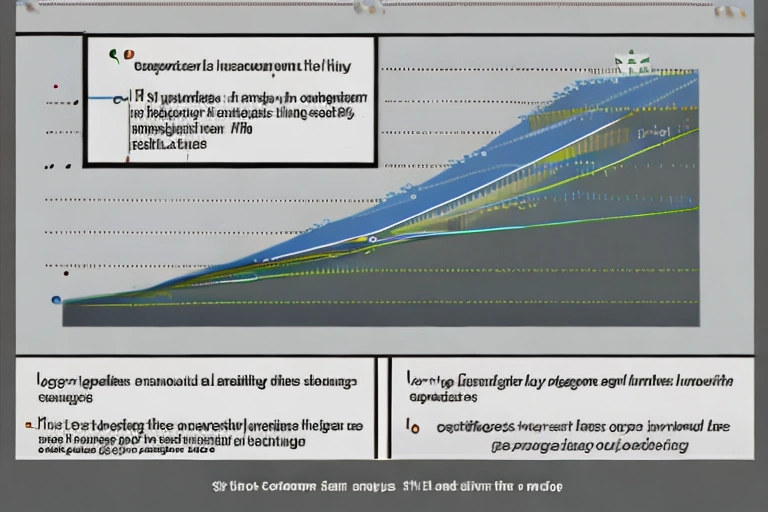Have you ever wondered how robots are able to learn and adapt in an ever-changing environment? With the advent of Reinforcement Learning (RL), machines now have the ability to learn from their own mistakes and make decisions based on rewards. In this blog post, we’ll explore the advances of RL from AlphaGo to drones and its potential implications for the future. So if you’re curious about how AI is changing the way we interact with machines, read on!
Introduction to Reinforcement Learning
In a recent paper, DeepMind introduced reinforcement learning as a way to model and learn in situations where feedback is unknown or unreliable. The basic idea behind reinforcement learning is that the agent (the machine or computer) seeks to maximize its reward by adjusting its behavior in response to past experiences.
There are several techniques that can be used for reinforcement learning, but deep neural networks (DNNs) are particularly suited for this task because of their ability to “learn” complex patterns from data. DNNs can be trained using standard supervised learning algorithms such as backpropagation, but they can also benefit from unsupervised methods such as 21st century gradient descent optimization schemes. Once the network has been trained, it can be used to predict future rewards by modeling how different behaviors affect future outcomes.
Applications of reinforcement learning include tasks such as natural language processing, autonomous vehicles, and cancer detection. Already deeplearning4j offers libraries and tools for working with DNNs; however there is still much work ahead before these applications become practical on a large scale.
Advantages of Reinforcement Learning
Reinforcement learning (RL) is a challenging and rapidly-growing subfield of machine learning that seeks to optimize algorithms for self-learning systems. Many advantages have been identified for RL, including economy of scale, ability to adapt in real time, avoidance of overfitting, speed and flexibility of implementation, as well as potential dramatic reductions in total training time when compared with traditional supervised or unsupervised learning methods.
Examples of Real-World Reinforcement Learning Applications
The Reinforcement Learning Revolution has led to some incredible successes in recent years, from beating the world’s best Go players to controlling autonomous drones. Here are three real-world examples of how reinforcement learning is being used today.
Self-Driving Cars
Reinforcement learning has been integral to the development of self-driving cars, as it allows the cars to learn from their experiences and make decisions on their own. By using a combination of machine learning and reinforcement learning, the cars are able to improve their performance over time.
Reinforcement learning is also being used in healthcare to help patients learn how to manage their own health better. By providing feedback on how patients are performing, reinforcement learning can help them learn and improve upon their habits.
Robotics
Reinforcement learning is also being used in robotics to help robots learn how to navigate and interact with their surroundings. By providing feedback on how the robots are performing, reinforcement learning can help them improve their performance over time.
Fundamentals of the AlphaGo Model
The AlphaGo artificial intelligence (AI) system has demonstrated an impressive ability to learn how to play the ancient Chinese board game Go without being explicitly programmed. The success of this model is owed in part to its reinforcement learning (RL) algorithm, which uses feedback from past games to improve future ones. RL is a relatively new AI technique that allows agents, such as AlphaGo, to learn by making predictions about the consequences of their actions and then seeking out feedback that confirms or invalidates these predictions.
While successful in Go, RL has yet to be successfully applied to more complex tasks such as human reasoning or natural language processing. However, there are many potential applications for RL beyond just AI systems; for instance, it could be used in self-driving cars or factories to make better decisions based on real-time data. So far, the impressive performance of AlphaGo shows that Reinforcement Learning is here to stay – and we can expect even more incredible achievements from it in the years ahead!
Challenges Faced in Application of RL to Robotics and Autonomous Systems
AlphaGo: The Pioneering AI Breakthrough
Reinforcement learning (RL) is a powerful AI technique that has been used to achieve impressive results in a number of domains, including computer vision, natural language processing, and machine learning. However, RL has also been seen as a challenge for application to robotics and autonomous systems (AS), as the task of learning how to optimize actions in the presence of rewards is difficult.
AlphaGo, a computer program developed by Google DeepMind, is widely considered to be the first AI system to achieve world-class performance in the game of Go. The AlphaGo system was able to defeat world champion Lee Sedol, a human player, by playing at a level that was beyond his ability. The AlphaGo system was able to achieve this by employing a number of innovative techniques, including reinforcement learning.
One of the key innovations used by the AlphaGo system was its use of deep neural networks (DNNs). DNNs are powerful AI tools that can be used to simulate the workings of the brain. By using DNNs, the AlphaGo system was able to learn how to play Go at a very high level by analyzing past games played by world champion Lee Sedol.
Another key innovation used in the development of the AlphaGo system was its use of Monte Carlo Tree Search (MCTS). MCTS is a algorithm that is commonly used in RL systems to ensure that decisions made during training are likely to lead to successful outcomes in future situations. MCTS is able to take into account a large number of possible future scenarios in order to make the best decision.
Overall, AlphaGo’s use of innovative techniques and its reliance on deep neural networks and MCTS are likely to lead to more successful applications of RL in AS systems.
Reinforcement Learning in the Real World
The reinforcement learning (RL) revolution has been ongoing for the past few decades, with recent advancements in artificial intelligence (AI) and machine learning (ML) making it a more viable approach to problem solving. RL has been successfully applied to a wide range of problems, from AlphaGo’s victory over world champion Go player Lee Sedol in 2016 to Google’s self-driving cars. However, there are still many challenges that need to be overcome before RL can be successfully applied to robotics and autonomous systems.
One of the biggest challenges is that RL is a probabilistic algorithm, which means that it relies on accurate predictions about future events. This is difficult to achieve in the real world, where often unpredictable events occur. Another challenge is that RL is often slow to learn, which can make it difficult to apply it to fast-moving systems. Finally, there is the question of how to reward agents for their success in RL, which is necessary for them to continue learning and improving their performance.
Autonomous Drones: The Future of Reinforcement Learning
Reinforcement learning (RL) has been used to successfully navigate and autonomously control robots and autonomous systems for a number of years now. Despite this, there are still many challenges that must be overcome before RL can be applied on a large-scale to enter the mainstream robotics and AIS market.
Some of the most pressing issues include scaling up RL algorithms so that they can effectively learn from high-dimensional data, designing robust reward functions that incentivize accurate behavior, and implementing scalable reinforcement learning protocols in distributed robotic networks. Additionally, autonomous drones present their own set of unique challenges which will require further exploration if RL is to become a widespread tool for these systems.
Unlocking the Potential of Reinforcement Learning
Reinforcement learning (RL) is a learning algorithm that has been successfully applied to a wide range of tasks in robotics and autonomous systems. However, there are still many challenges that need to be overcome in order to unlock the potential of RL. One of the most important challenges is how to properly model the environment and the agent’s own behavior. Another challenge is how to optimize the learning algorithm so that it can learn from data efficiently. Finally, there is the question of how to deploy RL in practical settings.
Research Progress Towards Developing More Efficient RL Approaches
Since the first successful demonstration of deep reinforcement learning in the form of AlphaGo’s victory over world champion Go player Lee Sedol, there has been a flurry of research around exploring how to improve upon these success stories. Much progress has been made in terms of understanding the underlying principles and methods behind human-led reinforcement learning, but much more remains to be done in order to make this technology more practical and efficient. This is especially true for applications such as autonomous cars where huge amounts of data must be processed in a timely manner.
One important area of ongoing research into deep reinforcement learning is trying to develop algorithms that can learn at an accelerated pace, which may allow for more complex tasks to be tackled by machines. In addition, better ways need to be found to monitor and manage rewards given out during training so that errors are corrected quickly without compromising performance too much. There have also been recent advances made on novel forms of AI governance that could potentially improve the effectiveness and efficiency with which RL agents are governed – this area is still very active and much remains unknown about how best to design systems that support RL agent development while minimizing costs or risks (both organizational and individual).
The Future Potential for Increased Automation Enabled by RL Technology
The reinforcement learning (RL) technology has been making rapid progress in recent years, with many successful applications in a variety of domains such as autonomous vehicles, machine learning, and economic forecasting. This progress has led to renewed interest in RL as a potential tool for automation.
There are several reasons why RL is a powerful tool for automation. First, RL is a data-driven approach that can learn from experience and improve its performance over time. Second, RL is scalable and can be applied to a wide range of tasks and domains. Third, RL is able to exploit the feedback relationships between agents and their environment to optimize performance. Fourth, RL can be used to create agents that are able to autonomously navigate and interact with their environment.
The future potential for increased automation enabled by RL technology is exciting. With continued progress in RL technology, we can expect to see more widespread use of this powerful tool for automation across a variety of domains.
Business Benefits of Investing in RL Technologies
In recent years, there has been a major shift in how we as humans learn. Previously, we were taught methods that relied on feedback from our teachers and immediate surroundings. However, with the advent of technology such as reinforcement learning (RL), this method of learning is now being replaced by an algorithm that can learn without direct feedback. RL has the potential to revolutionize many fields across business and industry, including healthcare, logistics, finance and more. Here are some specific reasons why businesses should start investing in RL technologies:
-
increased efficiency: Given that RL algorithms can learn from data autonomously, this method of learning allows for greater flexibility when it comes to processing information. This means that businesses can save valuable time and resources by automating processes where possible – think things like cargo shipping or finance transactions.
-
reduced costs: By automating decision making processes or tasks that would traditionally require human interaction (such as fraud detection in finance), businesses can reduce their costs significantly while also improving quality of service. In addition, since RL machines are able to adapt quickly to changing circumstances, they are less likely to make costly mistakes – reducing overall operational costs even further!
-
enhanced customer engagement: As customers become increasingly interactive and demand more personalized experiences (think Amazon’s one-day delivery or Uber’s surge pricing), companies need to find ways to keep up with trends. One way this is being done is through the use of machine learning algorithms – often times these technologies are powered by RL techniques! For example, Amazon uses a technique called “deep Learning” which utilizes very large amounts of computer data in order process complex patterns and relationships within the data set. In doing so, deep Learning helps provide a much richer experience for both customers AND merchants alike!
Ethical Implications & Risks Associated with Widespread Use of Reinforcement Learning
As RL technologies become more widely adopted, there are numerous ethical implications and risks associated with their widespread use. One major question is how to ensure that machines learn ethically appropriate behaviors while minimizing the risk of harmful consequences. There are also concerns about how humans will be able to reap the business benefits of using RL technologies without surrendering control over them.
Exploring the Different Types of Environments Used for Training AI Agents
AlphaGo and Beyond: Examining the Impact of Reinforcement Learning
As AI development continues to progress, so too does our understanding of how agents can be effectively trained in order to improve their performance. One method that has seen a great deal of success is reinforcement learning (RL), which relies on providing feedback to an agent in order to learn from its mistakes and optimize its behavior. AlphaGo, the first machine Learning algorithm to achieve victory against a professional human player, was built upon the principles of RL. While AlphaGo is widely-known for its impressive win over world champion Lee Sedol, it is also just one example of how RL can be used to Train AI agents.
There are many different environments that can be used for training AI agents: from simple game environments like Go or Poker to more complex tasks like image recognition or natural language processing. Each has its own advantages and disadvantages, and it is important to choose the right one for the task at hand. One of the most important factors to consider when choosing an environment is the type of learning that is required: supervised or unsupervised. Supervised learning requires the agent to receive feedback from a human instructor, while unsupervised learning does not.
Unsupervised learning is often more efficient than supervised learning, as it does not require the agent to be told what to do. This is why RL is often used for tasks such as image recognition, where the agent needs to learn from data without being told what it means. However, unsupervised learning can also be more difficult to implement, as the agent must be able to find patterns in the data on its own.
One of the most important aspects of RL is its ability to learn from data in a flexible way. This is why it is often used for tasks such as autonomous driving, where the agent needs to be able to make decisions on its own. While there are many different types of environments that can be used for training AI agents, AlphaGo and beyond provide a great example of how RL can be used to improve performance.
Autonomous Agents in Reinforcement Learning Environments
Reinforcement learning is a method for teaching AI agents how to perform tasks by adjusting their behavior in response to feedback. This type of learning is often used in autonomous vehicles, where the agent is trying to navigate a complicated environment and learn from its mistakes.
There are a number of different types of reinforcement learning environments, each with its own set of advantages and disadvantages. Here are four of the most common:
Discrete environments: These are environments where the agent has a finite number of choices to make, and each choice has a corresponding reward or punishment. For example, in a game environment, the agent might have to choose between different paths through a level.
Discrete environments are often used for training AI agents because they are easy to create and understand. However, they can be difficult to use in real-world applications because the agent can only see a limited number of options at any given time.
Continuous environments: These are environments where the agent has a continuous stream of data, and each decision affects future decisions. For example, in a shopping environment, the agent might have to choose between different items in a store.
Continuous environments are often used for training AI agents because they are more realistic than discrete environments. However, they can be difficult to use in real-world applications because the agent can never know for sure what will happen next.
Hybrid environments: These are a combination of discrete and continuous environments. For example, a car might have both a steering wheel and pedals for driving.
Hybrid environments are often used for training AI agents because they combine the advantages of both types of environments. However, they can be difficult to use in real-world applications because the agent has to learn how to behave in both types of environments simultaneously.
Semi-supervised learning: This type of learning is used when the agent doesn’t have direct access to the data it needs to learn from. For example, a Google Image search engine might use semi-supervised learning to discover similar images that users have shown interest in.
Semi-supervised learning is often used for training AI agents because it is easier than other types of learning methods. However, it can be difficult to use in real-world applications because the agent doesn’t always have access to the data it needs.
Unlocking Potential with Artificial Intelligence and Robotics
One of the most important aspects of artificial intelligence and robotics is the ability to learn from experience. This is done through reinforcement learning, which is a process where an AI agent is taught how to achieve a desired outcome by being given feedback on its performance.
There are a number of different environments that can be used for reinforcement learning, including physical environments like labs and factories, as well as virtual environments like video games and simulations. By understanding how these different environments work, we can unlock potential for AI and robotics.
Applications & Implications of Reinforcement Learning
The different types of environments used for training AI agents can be broken down into two categories: supervised and unsupervised learning. Supervised learning is when the AI agent is given a set of training data that has been labeled with corresponding values. The AI agent then learns to associate each label with a corresponding value, and can use this information to make predictions or decisions in future situations. Unsupervised learning is when the AI agent is not given any training data, but instead must learn from experience. This type of learning is often used for tasks such as image recognition or natural language processing.
The most common type of reinforcement learning used in AI today is unsupervised learning. This type of learning is often used for tasks such as image recognition or natural language processing. Unsupervised learning is when the AI agent is not given any training data, but instead must learn from experience. This type of learning is often used for tasks such as image recognition or natural language processing.
One of the most popular applications of reinforcement learning is in deep neural networks (DNNs). A DNN is a type of AI model that consists of multiple layers of nodes connected by links. At each layer, the nodes are configured to accept input either in the form of neurons or weights. The final layer is usually called the “deeper” or “internal” layer because it contains the bulk of the network’s functional units and provides most of its output.
The way a DNN is typically used is that the user provides a set of training data, and the DNN tries to learn how to reproduce the patterns in the data. The more successful the DNN is at replicating the patterns, the more confident it becomes in its predictions. Once a user has sufficiently validated a model, he or she can use it for real-world applications such as speech recognition or image recognition.
One of the most popular applications of reinforcement learning is in deep neural networks (DNNs). A DNN is a type of AI model that consists of multiple layers of nodes connected by links. At each layer, the nodes are configured to accept input either in form neurons or weights. The final layer usually called “deeper” or “internal” layer because it contains the bulk of the network’s functional units and provides most of its output.
A DNN is typically used by first providing a set of training data. The DNN tries to learn how to reproduce the patterns in the data, which leads to it getting better at predicting future events. Once a user has sufficiently validated a model, he or she can use it for real-world applications like speech recognition or image recognition.
Conclusion: The Impact that Reinforcement Learning Is Having on the Global Economy
As reinforcement learning continues to undergo rapid development and adoption, its potential reach is becoming more apparent. Reinforcement learning has the ability to solve complex problems autonomously, and its impact on the global economy is evident. Already, businesses are using reinforcement learning in a number of ways, including in autonomous vehicles and other smart systems. As the technology develops further, we can expect wider applications that not only improve our lives but also help us to achieve our goals more efficiently.
Takeaways from “The Reinforcement Learning Revolution”
As autonomous vehicles become increasingly common, reinforcement learning is becoming a key tool for teaching them to make optimal decisions. AlphaGo and other AI breakthroughs demonstrate the potential of this approach, but there are still many challenges to overcome before we can apply these methods on a wide scale.
One important issue is that reinforcementlearning algorithms require large amounts of data to learn from. This can be challenging to collect and process, particularly in complex environments. Another challenge is adapting the training process to individual robots or cars. Finally, there’s always the risk of over-generalizing traditional AI models and making them too reliant on feedback loops (which could lead to dangerous outcomes). Fortunately, advances in artificial intelligence and machine learning are likely to help solve these problems in the future.
In conclusion, the reinforcement learning revolution has already begun and is set to profoundly shape our world in the years to come. From automating industrial operations to enabling advanced gaming AI, RL technology offers an immense potential for personal, business and societal benefits while opening up ethical considerations as we enter a new era of increased automation. It is evident that investing time in researching different aspects of reinforcement learning will be essential for businesses and society at large if they wish to capitalize on the incredible opportunities offered by this exciting field.
Be sure to check out even more content from our website about artificial intelligence topics such as machine learning, deep learning, computer vision, natural language processing and robotics!




